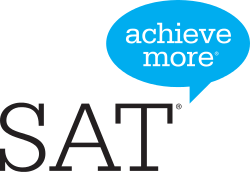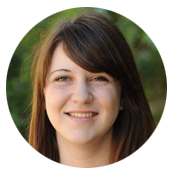
You might have heard that College Board released a new version of the SAT in 2016. So what should you do if you want to prepare for this version of the SAT but are mainly familiar with the old version? And do you really have to throw out all of your "old SAT" study materials?
We will go through the SAT section by section and note key differences between the old and new SAT. Next, we will explain how to prep for the new SAT based on those differences. We will point out places that you can still use old prep materials to prepare for the new SAT and also point you toward other free study resources online. We will also link extensively to our SAT study guides throughout this post to give you more targeted advice by section.
Big Format Changes on the Redesigned 2016 SAT
The SAT still has its three main sections – Reading, Writing, and Math – but the reading and writing scores are now combined for one score out of 800, rather than being scored separately.
That means that the math section is now weighted more heavily on the SAT. It's now very important to get a strong math score to get a good overall composite score.
Also, answers now have four choices instead of five. This doesn’t mean the test is easier – having fewer answer choices just means you’re less likely to get an answer choice that’s very easy to eliminate.
If you want to read a complete breakdown of differences between the old and new SAT, check out our post on the subject. In this post, we’ll summarize important differences but focus on giving study tips.
SAT Reading Study Guide
Key Differences
All questions on the redesigned SAT Reading section are based on passages with set topics. There are two history/social science passages, one US or world literature passage, and two science passages. On the old SAT, the questions often came from these categories but the topics were not predetermined.
There is also more emphasis on defining vocabulary in context, understanding and using evidence, making logical arguments, and using scientific reasoning on the new SAT.
The new SAT doesn't have vocabulary in isolation questions – more commonly known as sentence completion questions. The emphasis is now on defining vocabulary in context.
New Questions
There are two main types of new reading questions.
- Evidence Support: These questions come in sets of two. The first asks a question about the passage, and the second question asks you where in the passage you got your evidence for the first question.


Via College Board's Test Specifications for the Redesigned SAT.
- Data Reasoning: These questions have you interpret graphs or charts and say which fact they best support or least support. You don't need to be a science or data expert to get these questions right, but you need to be able to read and interpret graphs and charts.
How to Study
For the old SAT, knowing vocabulary was crucial to doing well. It’s still important to know vocabulary for the redesigned SAT, but you will have context clues to help you. So in addition to studying vocabulary words, you should also practice doing advanced reading and test your ability to define tough words based on their context.
Your first place to head for SAT Reading practice is the source: the College Board website. They've posted a number of free new SAT practice tests. Start there to get a sense of what the new SAT Reading section is like.
Still have old SAT prep books sitting around? You can use old SAT Critical Reading questions to practice, but focus on the passage-based questions and ignore the sentence-completion questions. ACT Reading section questions will also be helpful, as they are all passage-based and contain vocabulary in context as well as logical progression questions.
Another unlikely but helpful source is ACT Science questions. Yes, science! ACT Science also has you break down charts, graphs, and evidence. If you can do well on ACT Science, you will be able to do well on the new SAT data reasoning questions.
The new data reasoning questions (“this chart most supports the following argument?”) are actually phrased very similarly to the LSAT logical reasoning questions. Although the LSAT questions are trickier since you are interpreting a paragraph or argument and not a chart, if you’re worried about data reasoning, you could challenge yourself with LSAT logical reasoning questions. Check out some sample questions over the Law School Admissions Council website.
In addition to studying with practice questions and sections, make an effort to read widely – think books as well as publications like The New York Times, The Economist, The New Yorker, Wired, etc. The more challenging articles you can read, the better you can become at defining new words in context, and the more prepared you’ll be for the science and social science passages in particular.
Want a bit more structure for vocabulary in context? One of my favorite tools for learning vocabulary in context is a browser app called ProfessorWord. The app scans whichever page you are currently reading online and pulls out all the ACT/SAT words, with definitions. This article alone has about a dozen SAT vocabulary words, according to ProfessorWord. Pretty nifty, huh?

SAT Writing Study Guide
Key Differences
The writing section is quite different on the new SAT. There is more emphasis on logic and expression of ideas, higher-level writing skills, and punctuation. Furthermore, all questions are passage-based – this is quite different from the old SAT, which had you correct a sentence or two in isolation.
This means that there are fewer grammar rules tested in isolation, which in turn means fewer "gotcha" questions on the new SAT Writing section. However, being aware of writing style, construction, and organization is more important, since you will now be working with longer passages.
How to Study
It’s still important to know English grammar rules to do well on this section. Start your studying by learning English grammar rules by heart. Then give the SAT's official practice tests a try.
In terms of additional practice questions, we recommend you use ACT English practice questions, as these are all passage-based, like the new SAT Writing questions are. You can also use old SAT Writing multiple-choice questions to test your grammar rule knowledge, but remember to be ready for passages.
Finally, the more you read and write, the better you will get at spotting writing organization and style naturally. Make sure to read something academic or challenging every day, even if it’s just for class!
New SAT Essay Study Guide
Key Differences
The essay score is now completely separate from the writing score. This means that, similar to the ACT, your essay score won’t affect your overall composite, but it will still be visible to colleges, so it’s as important as ever to do well.
The essay is now 50 minutes long instead of 25. While you have more time to write, you have a much more specific task, so don’t assume the new essay is easier!

You have to analyze how an author builds an argument in a passage (the passage will be part of the prompt). So you have to read the passage and write about it analytically during that 50-minute period.
You’re no longer coming up with your own evidence with examples – this question is much more focused on your ability to deconstruct an argument and explain how it works.
How To Study
As we've mentioned, you should check out College Board's new SAT practice tests first to see real examples of the new SAT essay. But if you run through all of the practice tests and want more free resources, there is another great source of practice you can use. The new SAT essay is very similar to the AP English Language and Composition Free Response question two.

Via College Board's AP English Language and Composition page.
If you happen to be taking AP English Language, your studying for that AP test will help you prepare for the new SAT essay.
But even if you’re not taking AP English Language, you can use past free response questions for practice. Remember to find question two for each old AP English Language test.
Keep in mind as you practice that your goal for the essay is to explain what the argument is and how the author argues for it. Remember not to show personal bias – this isn’t about your opinion, it’s just about how the author builds their argument.
You can use a standard five-paragraph essay format if you like, but don't feel pressured to stick to it if you don't find that style helpful. Focus on making your writing clear and concise, and using evidence from the passage.
SAT Math Study Guide
Key Differences
The math section has been changed the least for the new SAT, but there are changes you should be aware of as you start studying.
There are now some multi-step problems, a section you can’t use a calculator on, a few questions on basic trigonometry, emphasis on data and graphics interpretation, solving equations, algebra, and realistic scenarios as prompts for questions. There is less geometry focused on shapes, and fewer abstract questions.
How To Study
This is the section that is the least dramatically changed, so the old study principles for SAT Math are still in place. First, find out your weak spots, whether they’re in content (struggling with geometry) or in practice (you tend to make small mistakes and miss problems). Next, drill your weak spots with targeted practice problems until they’re no longer liabilities.
As you practice, we recommend using a notebook to keep track of the mistakes you make and why you make them. This will make it easier for you to zero in on your thought processes and figure out why you make mistakes, which will make it easier to fix them.
You can use old SAT Math questions, but ACT Math practice questions will also work, especially if you’re worried about trigonometry. It’s best to study with a mix of both to be ready for the new SAT.
Also, practice both with and without a calculator. You might find that you are relying on the calculator for tasks you don’t actually need it for. Remember on the SAT you should be minimizing calculator use anyway, even if you’re on a calculator-approved section. (Read a discussion about the best calculators for the SAT.)
Final Advice
Since the redesigned SAT is getting more similar to the ACT, you might consider riding out the change by taking the ACT instead. Its format hasn’t changed, and there are plenty of existing resources for studying for the ACT.
At the very least, take an ACT practice test and see how you do. If it seems considerably more manageable for you than the SAT (based on old SAT questions), it might be worth it to just study for the ACT instead.
Either way, definitely work ACT practice questions into your studying for the new SAT. The tests are getting similar, so use that fact to your advantage. If nothing else, you can save money on test prep materials!
What’s Next?
Read detailed breakdowns of the new SAT sections: math, critical reading, writing, and the essay. Understanding the new SAT is the first step to doing well on it.
Curious about the ACT? Learn the key differences between the ACT and old SAT, and how the ACT is scored.
If you’re thinking about taking the ACT instead, try taking a free practice test to see how you do.













